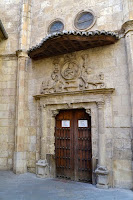LONDON EYE
The
London Eye stands out in the landscape of London for his great wheel,
with 135 meters of height, which radiuses us resemble those of a
bicycle, of which they hang 32 capsules for passengers completely
closed and isolated from the exterior, endowed with air conditioning
and heating.
Each
of these capsules of observation is constructed in his most by
crystal and possesses eight meters of length and four meters of
diameter. They have aptitude to transport 25 passengers for capsule
and they are sufficiently big in order that these could have
sufficient space to walk along the interior.
The
capsules of the London Eye, instead of hanging of the structure since
it happens in the majority of the big wheel, they are hold to the top
part of the wheel by means of two rings.
 To
avoid the problem of the own balancing of the big wheel, the capsules
of the London Eye rely on a mechanical system of stabilization that
it keeps them levelled during the whole tour. It is a question of a
very ingenious system that it allows the most visibility from the
interior of the capsule, since the structure and construction do not
prevent the vision.
To
avoid the problem of the own balancing of the big wheel, the capsules
of the London Eye rely on a mechanical system of stabilization that
it keeps them levelled during the whole tour. It is a question of a
very ingenious system that it allows the most visibility from the
interior of the capsule, since the structure and construction do not
prevent the vision.
The
design and the construction of the big wheel London Eye was one of
the most difficult architectural companies approached in the last
millenium.
The
most difficulty was the great size of the London Eye, which prevented
the builders from doing everything in the place. Therefore the big
wheel had to be constructed in sections several kilometres of the
emplacement that then were transported in barges by the river Thames,
where it continued the phase of assembly.
The
big wheel London Eye was mounted in horizontal position on a few
floating barges in the river and later it was moved to his vertical
position close by the Thames in what it was one of the major
challenges of the modern engineering.
His
legs white characteristics in the shape of A, have a weight of 310
tons and support the whole structure of the big wheel and the great
wheel of steel of which they hang the cabins. They were made of
Holland by steel from Great Britain.
His
construction lasted two years and the works finished in 1999.
However, the London Eye would not be opened the public until March,
2000. It was the major big wheel of the world up to the inauguration
of Nanchang's Star in May, 2006 and the later Singapore Flyer,
finished in 2008.






